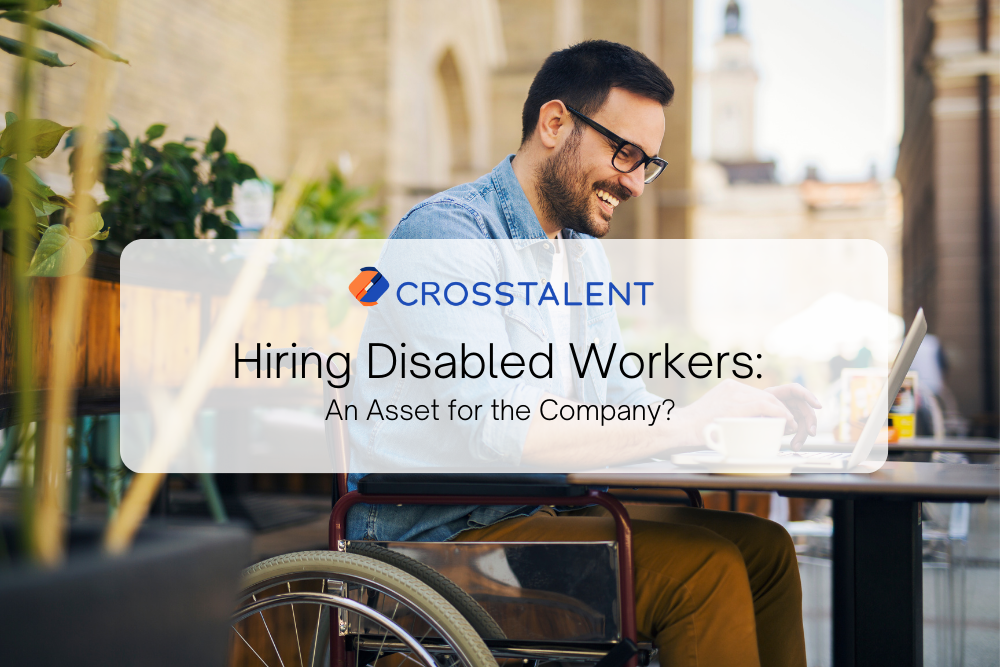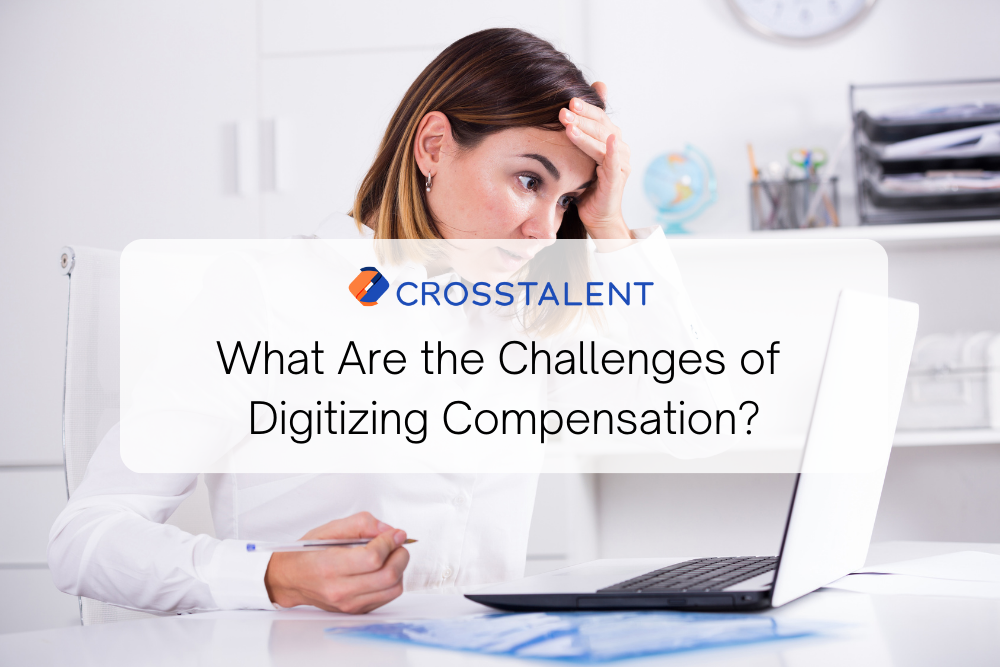Since the 2020 French legislation, all private and public companies, regardless of size, are required to facilitate the recruitment of people with disabilities. This article dives into the regulations, explores practical steps for fulfilling this obligation, and unveils the many advantages of building a more inclusive workforce.
At the end of this article, you’ll find a glossary of acronyms.
Note: the following information is based on French employment law.
Definition of Disability
What Does the Law Say?
The Disability Act of February 11, 2005, defines disability as follows:
“Constitutes a handicap (…) any limitation of activity or restriction of participation in life in society suffered in his environment by a person because of a substantial, lasting or permanent impairment of one or more physical, sensory, mental, cognitive or psychic functions, a polyhandicap or a disabling health disorder.” [translated from French]
Disability is assessed using the International Classification of Functioning, Disability, and Health (ICF), which was drawn up by the World Health Organization (WHO) in 2001. It considers both the medical and social dimensions of the person to assess the situation of disability.
Illness > Impairment > Limitation of activity > Restriction of participation in social life = Disability
Note that in France, there are 12 million people with disabilities. Of these, over 9 million have an invisible disability (i.e. over 75%).
Levels of Disability
There are three levels of disability:
- Less than 50%: the discomfort is not sufficiently significant to give rise to a benefit.
- Between 50% and 79%: this rate corresponds to major problems causing significant inconvenience in the person’s social or professional life. The difficulty can be clearly identified in the person’s life or compensated for by specific aids. Autonomy is preserved for the basic acts of daily life.
- Greater than or equal to 80%: this rate corresponds to serious disorders causing a major hindrance to daily life. Autonomy is affected. As soon as the person needs total or partial assistance or supervision to carry out the basic acts of daily life, the 80% rate is reached. This rate is also reached when there is a severe impairment with the abolition of a function (e.g., profound deafness).
The 100% rate is reserved for total incapacity, as in the case of a vegetative state or coma.
Even with the same pathology, the day-to-day consequences are not the same from one individual to the next, depending on the environment in which they live, their age, their sex, their social background, their life project, and so on.
The Obligation to Employ Disabled Workers (OETH)
Based on French OETH (Obligation d’Emploi des Travailleurs Handicapés) law, all employers (private and public) with more than 20 employees are obliged to employ disabled workers in a proportion of 6% of their workforce.
If they fail to meet this obligation, they pay a tax to the AGEFIPH (Association Nationale de Gestion du Fonds pour l’Insertion Professionnelle des Personnes Handicapées) or the FIPHFP (Fonds pour l’Insertion des Personnes Handicapées dans la Fonction Publique) association.
What OETH Means for Companies?
Employers must support all persons in accessing employment according to their skills and work capacity.
They must respect the principle of non-discrimination and allow their employees to progress and follow appropriate training courses.
The employer must, therefore, guarantee accessibility to the job and its working environment, according to the type of disability encountered, whether motor, sensory and/or psychological.
Accessibility rules are not limited to building standards but extend to working tools and conditions.
How Do Companies Comply With OETH?
As an employer there are three possible ways of meeting the obligation to employ disabled workers:
- The employment of disabled workers, regardless of the type of employment contract: permanent, fixed-term, temporary, internship, or work experience.
- The signing of an approved branch, group, or company agreement: implementation of a multi-year program to promote the employment of disabled workers for a maximum period of three years, renewable once.
- Payment of an annual financial contribution: allocated for each missing beneficiary.
What OETH Means for Employees
Disabled people have full employee status. Therefore, they are subject to the provisions of the French Labor Code and the collective bargaining agreement applicable to the company that hires them.
They and their employers are entitled to assistance to help them find and keep a job and are entitled to the following benefits:
1. Remuneration
An employee with a disability is an employee like any other. As such, their salary may not be lower than that stipulated by law or the collective bargaining agreement. No reduction in salary or bonus may be made on the grounds of disability.
2. Vocational Training
Disabled employees have access to all continuing professional training schemes, just like any other employee. This includes a company training plan, individual training leave, mobilization of the personal training account, etc.
3. Termination
There is no special protection against work termination. However, an employee may not be dismissed on the grounds of disability unless the occupational physician has declared the employee unfit for work and the employer can justify his or her inability to find another job.
In addition, there’s an important legal distinction regarding termination for disabled workers hired under the mandatory employment scheme. The statutory notice period for dismissal is doubled, with a maximum limit of three months. This extended notice period is not applicable when existing work regulations, collective bargaining agreements, or established company practices already mandate a notice period of at least three months.
4. Occupational Medicine
The occupational physician is the only body authorized to rule on an employee’s medical fitness or unfitness for the job. The assessment is conducted:
- at the initial medical examination
- during periodic medical check-ups
- when the employee returns to work after an accident or prolonged absence
The occupational physician will then:
- Gives an opinion on fitness for the job
- Suggests adjustments to the workstation
- Liaises between you and your employer
- Offers you a pre-reinstatement visit after a prolonged work stoppage, at your request or with your agreement (if the request comes from your treating physician or the social security doctor)
5. Workstation Adjustments
Companies employing people with disabilities can receive financial assistance from the French government to help them adapt machinery or tools, adapt workstations, or gain access to the workplace.
The aid can also compensate for the extra burden of supervision during which this presence is necessary to ensure the adaptation to the employment of disabled people.
6 Benefits of Recruiting Disabled Employees
1. Affirm Your Company’s Social Responsibility
Recruiting disabled people is a great way to implement your company’s corporate social responsibility. It goes beyond the regulatory dimension and demonstrates a strong commitment to a more inclusive society. It also enhances the company’s image with employees, job-seekers, and customers who share the same concern.
2. Improve Management Performance
Hiring disabled people enables the company to learn how to manage employee differences and adapt to how each person functions and needs.
3. Promoting QVCT for All Employees
Recruiting people with disabilities means working to change mentalities and combat preconceived ideas. It’s also an opportunity to take a broader look at your company: general organization, managerial approach, working conditions, ergonomics, and optimization of workstations.
The steps you take for an employee with a disability may ultimately prove positive for all your employees regarding quality of life at work and productivity.
4. You Recruit Competent, Motivated, and Loyal Employees
Employers are unanimous. Disabled employees are considered more conscientious, willing, loyal to the company, and highly adaptable. They are great assets for your teams.
5. Coping with Job Shortages
Some sectors have difficulty recruiting employees. Recruiting disabled workers allows companies to increase their chances of finding competent candidates.
6. Reduce or Even Eliminate AGEFIPH Contributions
Indeed, this is still a good argument for companies. For companies, recruiting a disabled person meets the 6% quota obligation. Each time a disabled worker is hired, the company reduces, or even eliminates, its annual contribution to AGEFIPH.
Sources: agefiph.fr and place-handicap.fr
Lexicon
Note: All translated from French
AGEFIPH: fund management association for the professional integration of disabled people
ICF: International Classification of Functioning, Disability and Health
FIPHFP: fund for the integration of disabled people into the public service
OETH: obligation to employ disabled workers
HRQoL: quality of life and working conditions
RQTH: recognition of the status of disabled worker




